Categories: Featured Articles » Novice electricians
Number of views: 4727
Comments on the article: 0
Hysteresis and eddy current losses
During magnetization reversal of magnetic materials by an alternating magnetic field, part of the energy of the magnetic field involved in the magnetization reversal is lost. A specific part of the power, which is called “specific magnetic loss”, is dissipated per unit mass of a certain magnetic material in the form of heat.
Specific magnetic losses include dynamic losses as well as hysteresis losses. Dynamic losses include losses caused by eddy currents (induced in the material) and magnetic viscosity (the so-called magnetic aftereffect). Losses due to magnetic hysteresis are explained by irreversible movements of domain boundaries.
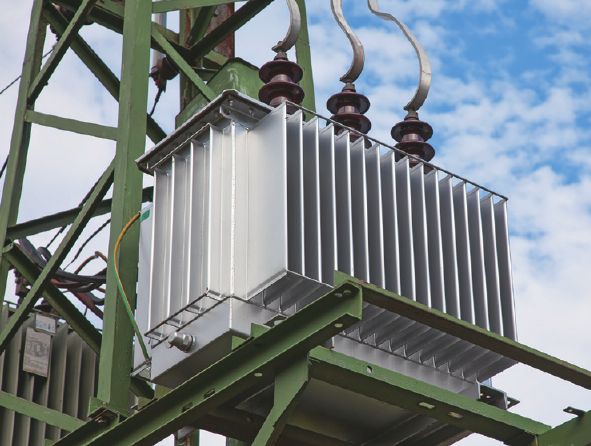
Each magnetic material has its own hysteresis loss proportional to the frequency of the magnetizing magnetizing field, as well as the area of the hysteresis loop of this material.
Hysteresis loop:
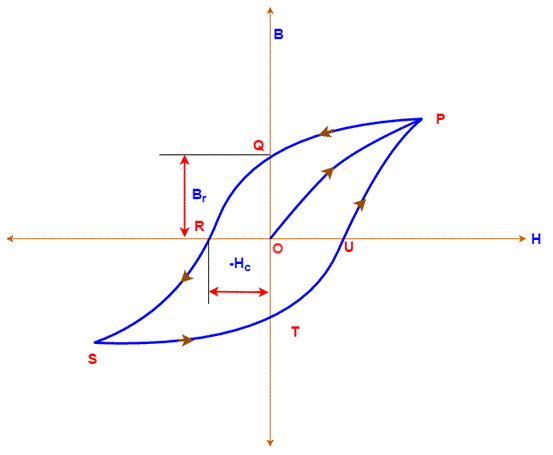
To find the power of losses associated with hysteresis in a unit of mass (in W / kg), the following formula is used:
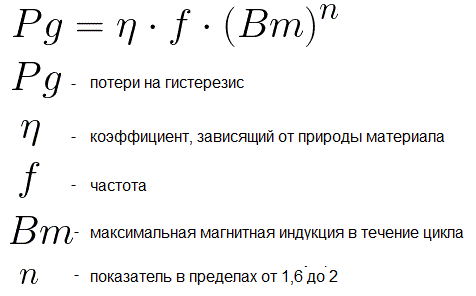
To reduce hysteresis losses, most often resort to the use of such magnetic materials, the coercive force of which is small, that is, materials with a thin hysteresis loop. Such material is annealed to relieve stresses in the internal structure, reduce the number of dislocations and other defects, and also enlarge the grain.
Eddy currents also cause irreversible losses. They are due to the fact that the magnetizing magnetization field induces a current inside the magnetization material. Losses caused by eddy currents, respectively, depend on the electrical resistance of the magnetized magnetization material and on the configuration of the magnetic circuit.
Thus, the greater the resistivity (the worse the conductivity) of the magnetic material, the smaller will be the losses caused by eddy currents.
Losses due to eddy currents are proportional to the frequency of the magnetizing magnetizing field squared, therefore magnetic circuits made of materials with high electrical conductivity are not applicable in devices operating at sufficiently high frequencies.
To estimate the power of eddy current losses for a unit mass of magnetic material (in W / kg), use the formula:

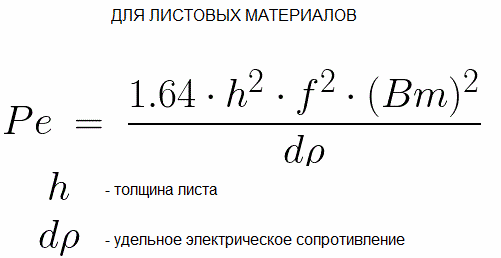
Since the eddy current loss quantitatively depends on the square of the frequency, for work in the high frequency region it is necessary first of all to take into account the eddy current loss.
To minimize these losses, they try to use magnetic cores with a higher electrical resistance.
In order to increase the resistance, the cores are assembled from a plurality of mutually isolated sheets of ferromagnetic material with a sufficiently high intrinsic electrical resistivity.
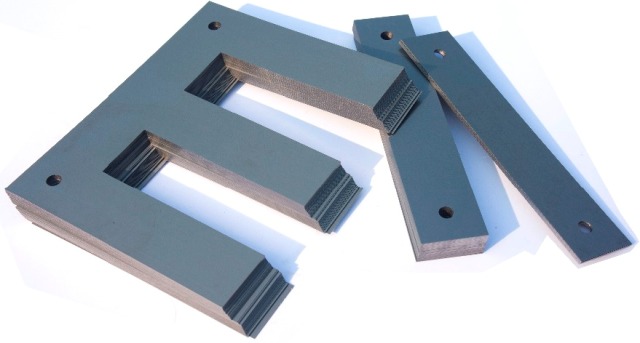
The powdered magnetic material is pressed with a dielectric so that particles of the magnetic material are separated from each other by dielectric particles. So get magnetodielectrics.
Another option is the use of ferrites - a special ferrimagnetic ceramic, characterized by high electrical resistivity, close to the resistance of dielectrics and semiconductors. In fact, ferrites are solid solutions of iron oxide with oxides of some divalent metals, which can be described by the generalized formula:

With a decrease in the thickness of the sheet of metal material, the losses caused by eddy currents decrease accordingly. But at the same time, losses associated with hysteresis increase, because with thinning of the leaf, the grain size also decreases, which means that the coercive force grows.
Almost with increasing frequency, eddy current losses increase more than hysteresis losses, this can be seen by comparing the first two formulas. And at a certain frequency, eddy current losses begin to increasingly prevail over hysteresis losses.
This means that although the thickness of the sheet depends on the working frequency, nevertheless, for each frequency, a certain thickness of the sheet must be selected with which the magnetic losses as a whole will be minimized.
Typically, magnetic materials tend to delay the change in their own magnetic induction, depending on the duration of the magnetizing field.
This phenomenon causes losses associated with magnetic aftereffect (or so-called magnetic viscosity). This is due to the inertia of the domain remagnetization process. The shorter the duration of the applied magnetic field, the longer the delay, and hence the magnetic loss caused by the "magnetic viscosity", more. This factor must be considered when designing pulsed devices with magnetic cores.
The power losses from the magnetic aftereffect cannot be calculated directly, but they can be found indirectly - as the difference between the total specific magnetic losses and the sum of the losses due to eddy currents and magnetic hysteresis:

So, in the process of magnetization reversal there is a slight lag in magnetic induction from the intensity of the magnetizing magnetization field in phase. The reason for this is again eddy currents, which, according to Lenz's law, prevent changes in magnetic induction, hysteresis phenomena and magnetic aftereffect.
The phase delay angle is called the angle of magnetic loss δm. The characteristics of the dynamic properties of magnetic materials indicate such a parameter as the tangent of the magnetic loss angle tanδm.
Here is the equivalent circuit and vector diagram for a toroidal coil with a core of magnetic material, where r1 is the equivalent resistance of all magnetic losses:
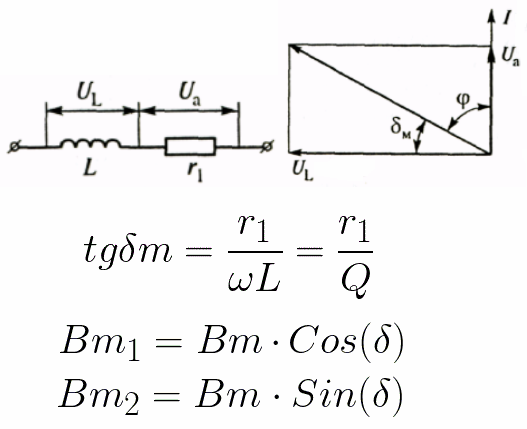
It is seen that the tangent of the magnetic loss angle is inversely proportional to the quality factor of the coil. The induction Bm arising under these conditions in the magnetizable material can be decomposed into two components: the first one coincides in phase with the intensity of the magnetizing field, and the second lags 90 degrees behind it.
The first component is directly related to reversible processes during magnetization reversal, the second to irreversible ones. Used in AC circuits, magnetic materials are characterized in connection with this parameter such as complex magnetic permeability:

See also at bgv.electricianexp.com
:
